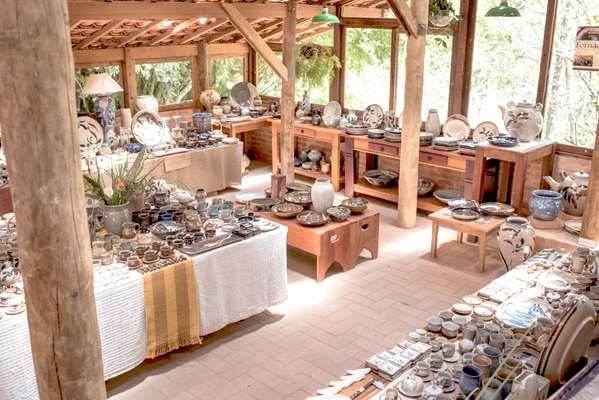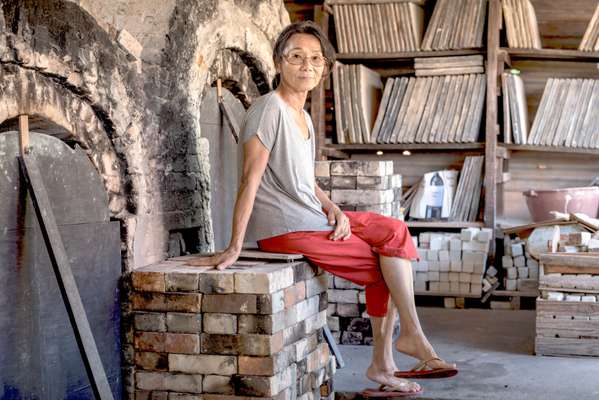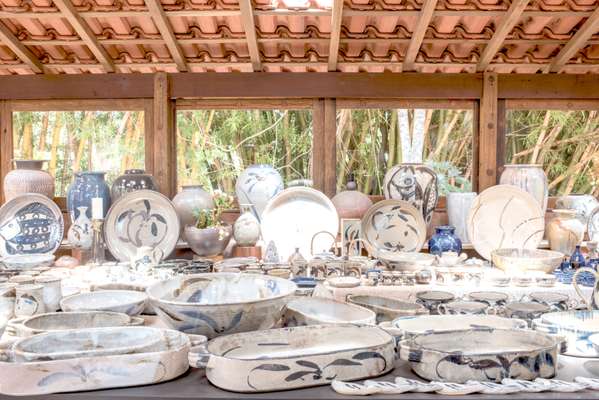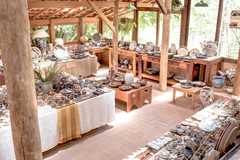Japanese ceramics / Cunha
License to kiln
Cunha in Brazil may be a world away from Japan but the latter’s ancient legacy of firing and glazing is living on in the Latin American city. Monocle meets the people keeping the ceramic tradition alive.
Remotely located between São Paulo and Rio de Janeiro are the green hills of the Paraíba Valley, criss-crossed by dirt roads revealing the iron-rich, ochre-red earth below – but that’s not the only treasure these hills hold. The fertile, tropical land around the quiet colonial town of Cunha is, of course, a world away from Japan. But with its abundance of clay and history of brick-making, the town has been home to a collective of plucky potters specialising in traditional Japanese ceramics – with their rich glazes and scorching wood-firing techniques – since 1975.
The story of Cunha’s ceramics has come a long way since then. Of the 25 or so potters who now live and work in Cunha only two of the founding group remain: Japanese Mieko Ukeseki and Portuguese Alberto Cidraes. “I came to Brazil in 1973 after spending three years in Japan, where I fell in love with ceramics,” the silver-haired Cidraes tells monocle, with just a hint of an accent from his native land. It was in Japan that he first met Mieko and her then-husband Toshiyuki, who were working as potters in Koishiwara, near Fukuoka.
“We came with the idea that we would have a big future in Brazil working with a noborigama [a traditional Japanese wood-fired chamber kiln],” the softly spoken Mieko says. “Back then in Japan the kilns were falling into disuse; there wasn’t enough wood.” A recce around the towns in the Paraíba Valley revealed conditions and materials perfect for their craft and a mayor who thought a small community of artisans might bring tourists to the area. “The mayor offered us a disused slaughterhouse to form a studio and somewhere to live,” says Cidraes. “Cunha had good clay, it had good wood; a lot of eucalyptus. So we had what we needed.”
The group – Mieko, Toshiyuki and Cidraes, plus two Brazilian brothers and another Japanese friend – set up camp together, quite literally, in the old slaughterhouse. Within a few months they had sourced clay, made their own glazes, built a 10-metre-long noborigama kiln and fired their first collection of stoneware. It was the beginning of a craft community that continues to this day, with a new generation of potters having learnt from the Japanese and Japan-trained first wave of migrants.







Leí Galvão apprenticed with Cidraes and Mieko in the early days before setting up his own studio with fellow apprentice Augusto Campos in 1988. The son of local farmers, Galvão was just a curious teenager when he started helping out at the old slaughterhouse, preparing clay, chopping wood and cleaning out the kiln. How things change.
Today Galvão shows monocle the five-chamber noborigama that he built with Campos. It is one of seven still in use in Cunha, with eucalyptus branches stacked up around the kiln and dark-grey pots drying out on shelves, waiting to be fired. “We fire the noborigama every other month,” says Galvão. “It is a tiring process that takes more than 45 hours, [which involves] putting in the wood and keeping an eye on it. In the last 20 hours we feed the kiln every three minutes, with temperatures upwards of 1,300c and an orange, almost white heat inside.”
Like most of the potters in Cunha, Galvão is a true craftsman from start to finish, processing the clay himself before throwing at the wheel or modelling by hand. “Each step in the process is important but the firing is the end of the cycle – the cycle that began way back when I dug up the clay.”
Further up the hillside, Tokyo-born Kimiko Suenaga and her Brazilian husband Gilberto Jardineiro, an old friend of Cidraes, built their bright and airy showroom – with the vast noborigama as the centrepiece – in 1984. Large vases, platters and more traditional Japanese wares – tea and sushi sets – are embellished with loosely painted motifs and glazed in blues, whites, reds and browns that the pair make themselves using local materials such as eucalyptus ash, black hematite and a traditional Japanese glaze made with rice-husk ash.
For Suenaga it was a dream to work with a noborigama kiln. Like Mieko and Toshiyuki, Brazil was the place where she could continue with her craft. “There are still some noborigama in Japan but they are getting harder and harder to use. There is not much wood there and it grows slowly, whereas in Brazil it’s easy to find wood. Everything is easier here.”
While the Japanese firing and glazing traditions live on in Cunha, a generation of potters is breathing new life into the town, with roots still very firmly planted in the land of the rising sun. Brazilian-born Marcelo Tokai and his wife Luciane, who both trained for years in Mashiko – a Japanese town famed for its rustic folkware – are experimenting with variants of the satiny shino glaze and delicate crackle finishes on large sculptures, as well as utilitarian ware.
Rogério David opened studio Casa Cunha just two years ago, having studied in London with the master of shino glaze: Lisa Hammond. He is still getting to know the nuances of his wood-fired kiln and testing out different techniques: imprinting crocheted doilies on slabs of clay; working with rougher, irregular clays inspired by Shigaraki ware; and spraying a soda glaze into the kiln during the firing. It may be a million metaphorical miles from Japan but here in Cunha there is a satellite community of young and old, Japanese and Brazilian, who are helping maintain the legacy of one of the nation’s most ancient traditions – with a touch of Latin flair.
“There has always been a strong connection with Japan here in Cunha – these kinds of ceramics have a long tradition in Japan,” says Suenaga. “There are towns in Japan known for their ceramics, where all the potters use the same clay and have exactly the same style. Not here. Everyone here has a different way of thinking and so everyone has their own style. That is what makes Cunha so interesting.”


